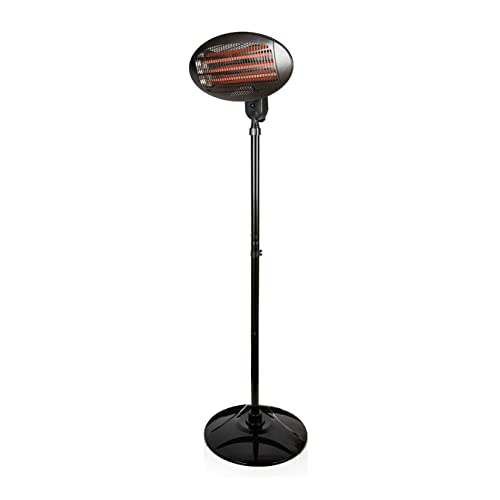A Comprehensive Guide to Purchasing Patio Heaters
As outdoor home become progressively popular, the demand for patio heaters has actually surged. These devices enable homeowners to extend their outdoor satisfaction well into the cooler months. Nevertheless, with a plethora of options offered on the marketplace, picking the best patio heater can seem overwhelming. This guide intends to offer informative information to assist buyers make notified decisions, covering types, features, factors to think about, and responses to regularly asked concerns.
Types of Patio Heaters
Patio heaters can be found in various designs and designs, catering to various outdoor areas and preferences. Here's a summary of the most common types:
| Type | Description |
|---|---|
| Lp Patio Heaters | Portable heaters that utilize gas tanks. Electric Outdoor Heaters UK are ideal for areas without electrical power and are simple to walk around. |
| Gas Patio Heaters | Connected straight to a gas line, these heaters are stationary but offer limitless heating without the requirement to replace tanks. |
| Electric Patio Heaters | Plugged into an electrical outlet, they are energy-efficient, simple to use, and require very little upkeep. They are available in numerous heating capabilities. |
| Infrared Patio Heaters | Use radiant heat innovation to warm particular locations and individuals instead of the air. This can be especially effective in windy conditions. |
| Fire Pits | Not traditional patio heaters, fire pits can serve dual functions of heating and supplying a space for roasting marshmallows or delighting in a campfire ambiance. |
Elements to Consider When Purchasing Patio Heaters
When searching for a patio heater, several essential elements need to be considered to make sure an informed choice. Here are crucial features to examine:
Heat Output:
- Patio heaters vary in BTU (British Thermal Units); higher BTUs relate to more heat.
- For average outdoor spaces, consider heaters with an output of 40,000 - 50,000 BTUs for sufficient warmth.
Fuel Type:
- Decide in between gas, gas, or electric based upon availability and benefit.
- Think about the preliminary cost and ongoing fuel expenses, as they can vary considerably.
Mobility:
- Determine whether a portable heater or a more irreversible service is required based on your outdoor space.
- Portable heaters supply versatility, while natural gas heaters are more steady however require installation.
Security Features:
- Look for features like automated shut-off switches, tip-over protection, and heat-resistant products.
- Safety ought to be a vital issue, specifically in windy locations or around children and animals.
Design and Aesthetics:
- Consider the design of the heater to guarantee it complements your outdoor design.
- Select between traditional and contemporary styles for a more specified aesthetic.
Reduce of Use and Maintenance:
- Assess how easy the heater is to spark, change the heat settings, and tidy after usage.
- Electric designs typically need less maintenance compared to propane or gas units.
Advantages and disadvantages of Common Patio Heater Types
| Type | Pros | Cons |
|---|---|---|
| Lp Patio Heaters | Portable, high heat output, easy to set up | Needs tank replacement, can be expensive to operate |
| Natural Gas Patio Heaters | Endless heating, low operating expense | Needs professional setup |
| Electric Patio Heaters | Energy effective, virtually maintenance-free | Restricted variety, depending on electrical energy supply |
| Infrared Patio Heaters | Instantaneous heating, very little wind result | Usually lower BTU output, particular area protection |
| Fire Pits | Ambiance and discussion starter, double purpose | Needs wood or gas, can be less effective as a heater |
FAQ about Patio Heaters
1. Just how much heat does a patio heater offer?
The heat output of patio heaters is measured in BTUs. Most outdoor heaters produce in between 30,000 and 50,000 BTUs, adequate to warm a common outdoor seating area.
2. Can patio heaters be used in the rain?
While some patio heaters are designed to be weather-resistant, it is usually recommended to keep them protected during rainy conditions to avoid damage and guarantee safe operation.
3. Do patio heaters require much maintenance?
A lot of patio heaters do not need extensive upkeep. Routine cleansing and looking for gas leakages in lp or natural gas designs are advised to ensure durability and security.
4. For how long do lp tanks last in patio heaters?
A basic 20-pound gas tank can last in between 10 to 12 hours on high settings, depending upon the heater's BTU output.
5. Can I utilize an electric patio heater inside?
Electric patio heaters are normally developed for outdoor usage; nevertheless, if they are rated for indoor use, they can be utilized in well-ventilated areas. Constantly ensure security steps are followed.
In summary, buying a patio heater includes considering different aspects such as heat output, fuel type, mobility, security features, and looks. By understanding the different types available and the advantages and disadvantages associated with each, buyers can confidently choose a patio heater that best fits their outdoor home. Given the adaptability and comfort these heaters offer, they can change any outdoor area into a warm and inviting retreat for family and pals to collect, even during cooler months. Whether taking pleasure in a cup of tea on a cold night or hosting a vibrant gathering, a patio heater can make all the distinction.

